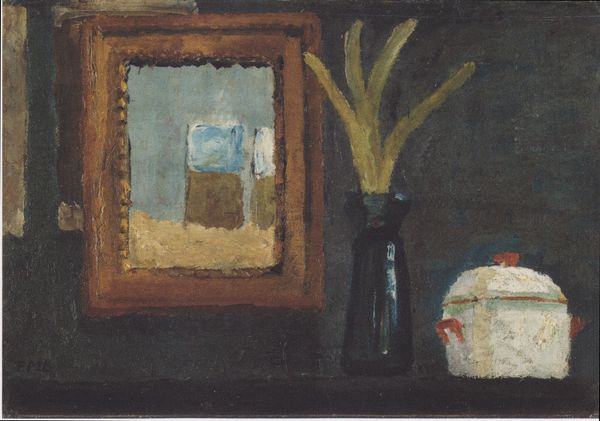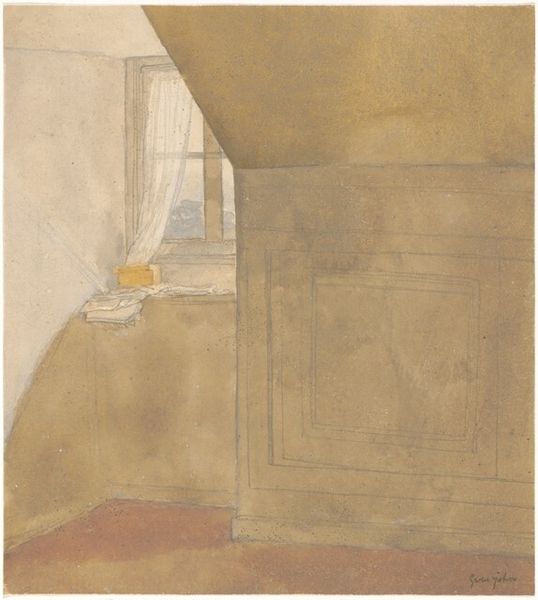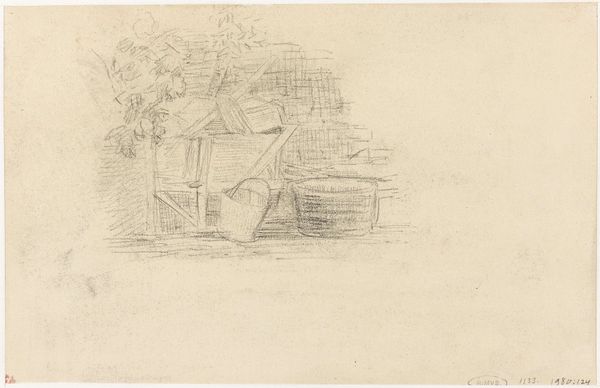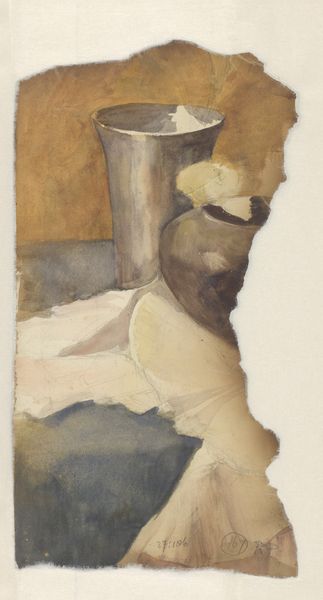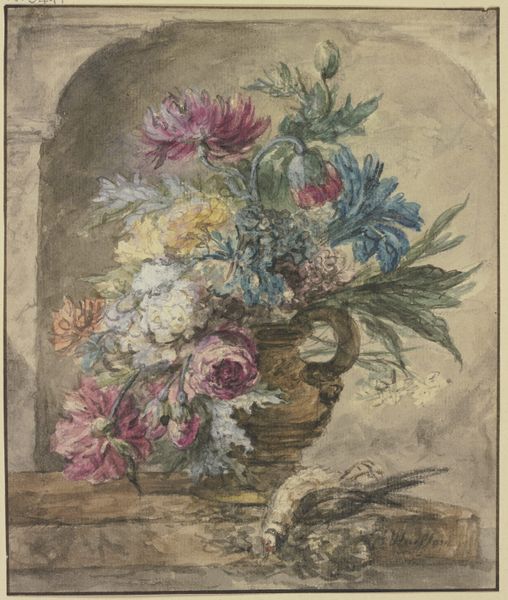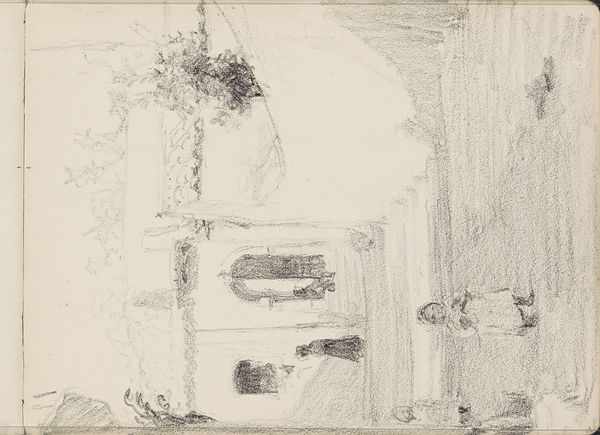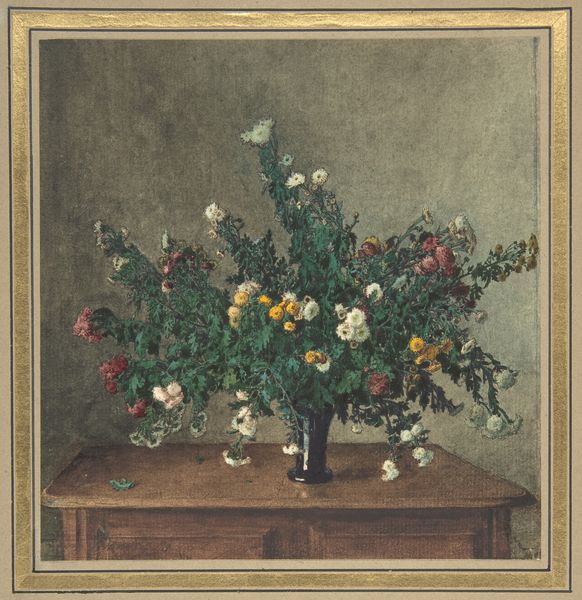
drawing, painting, watercolor
#
drawing
#
water colours
#
painting
#
impressionism
#
oil painting
#
watercolor
#
intimism
Dimensions: sheet: 24.8 x 34.6 cm (9 3/4 x 13 5/8 in.)
Copyright: National Gallery of Art: CC0 1.0
Editor: This is Henri-Joseph Harpignies' "A Corner of a Studio," likely a watercolor and oil painting. I’m struck by its intimate feel; it’s like peering into the artist's private creative space. What can you tell me about it? Curator: This quiet corner holds a powerful dialogue between the domestic and the artistic, a negotiation many women artists of the time grappled with publicly and privately in their studios. What do you notice about the symbolic value of roses in that period? Editor: Roses… they're often associated with beauty and femininity. Do you think it speaks to the roles women were confined to at the time, expected to focus on beauty and domesticity rather than broader artistic pursuits? Curator: Exactly! Harpignies, a male artist, captures this very tension, perhaps even subconsciously, positioning beauty – represented by the roses – as an element *within* the artistic process. What’s interesting to consider, then, is how a woman artist might stage this scene. What might she choose to display alongside her work? Editor: That's such a good question. Perhaps the presence of materials becomes much more evident... brushes, tools, elements signifying labor, intellectual pursuits. I imagine her subverting that expectation. Curator: Precisely. And this intimate view becomes an assertion, a statement. Editor: This reframes the artwork; the painting shows a gendered lens, framing expectations that are ultimately there to be deconstructed. Curator: It underlines the importance of considering who is behind the gaze, shaping our understanding of seemingly simple scenes. What you take away? Editor: Considering identity shapes what is presented and that it's crucial to question the power dynamics present. It opens a richer field for our examination, highlighting perspectives of many marginalized voices.
Comments
No comments
Be the first to comment and join the conversation on the ultimate creative platform.


